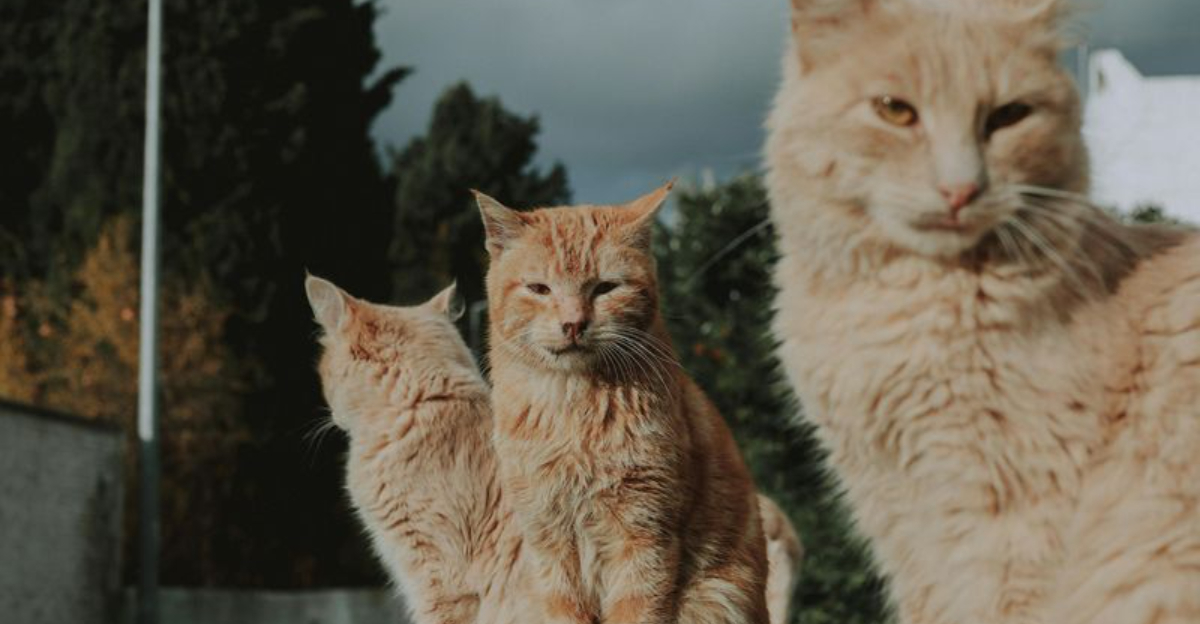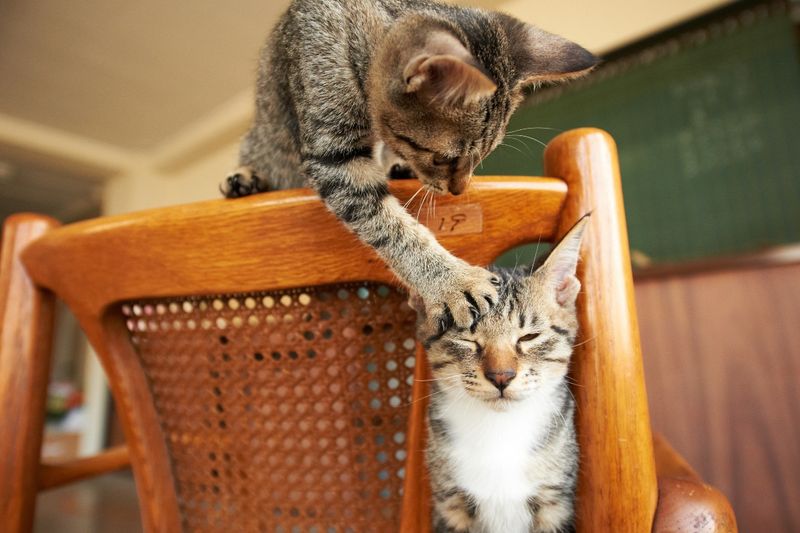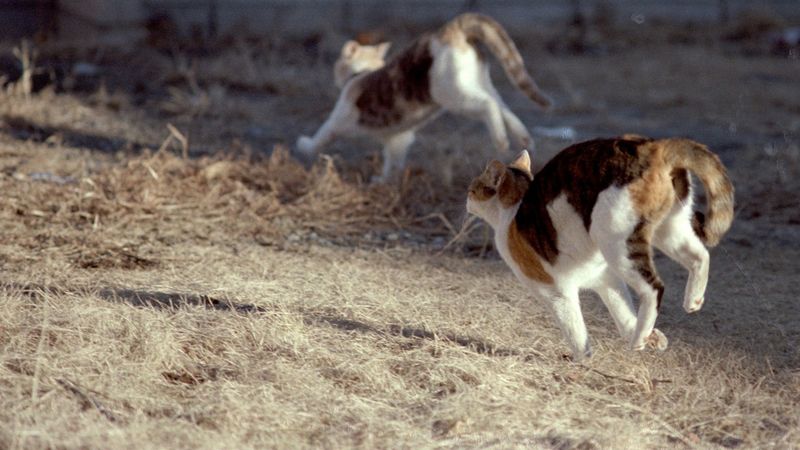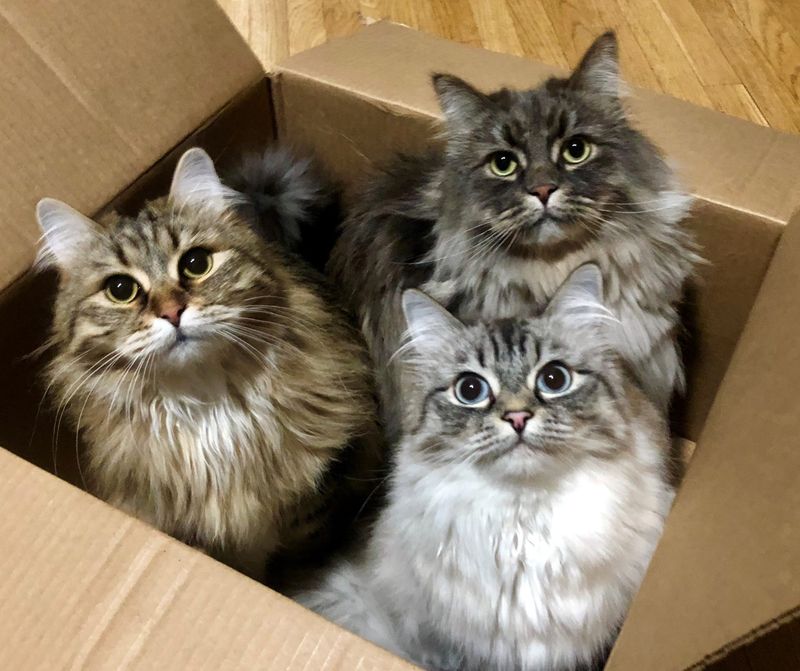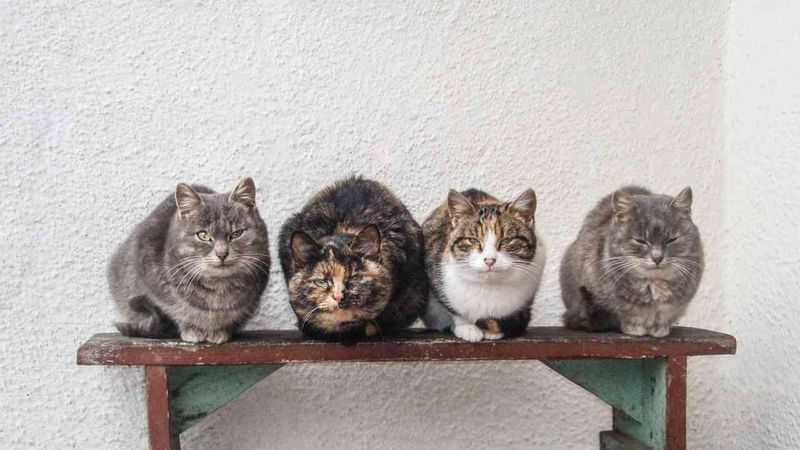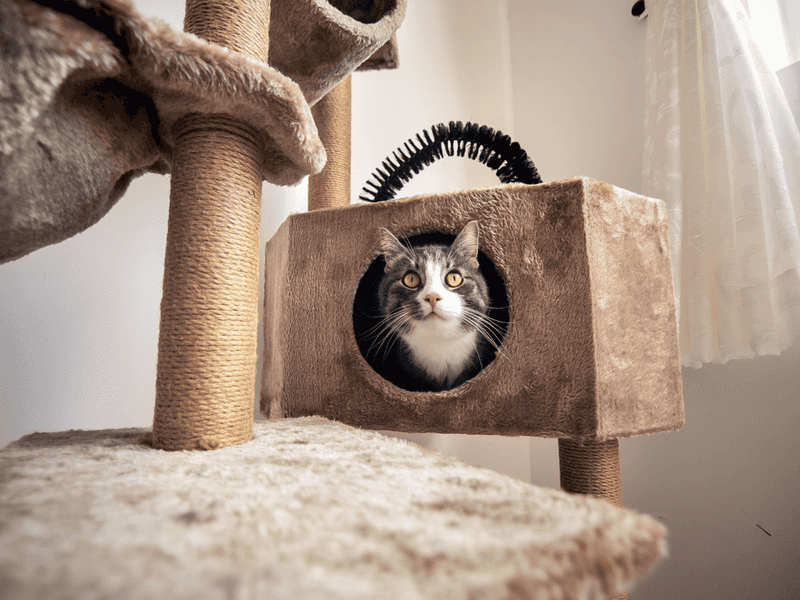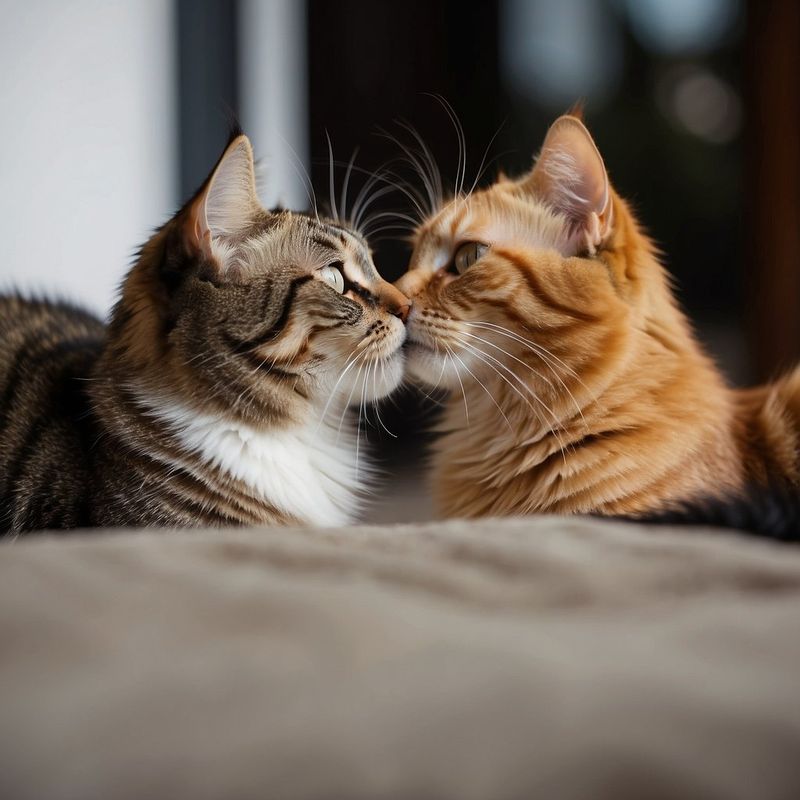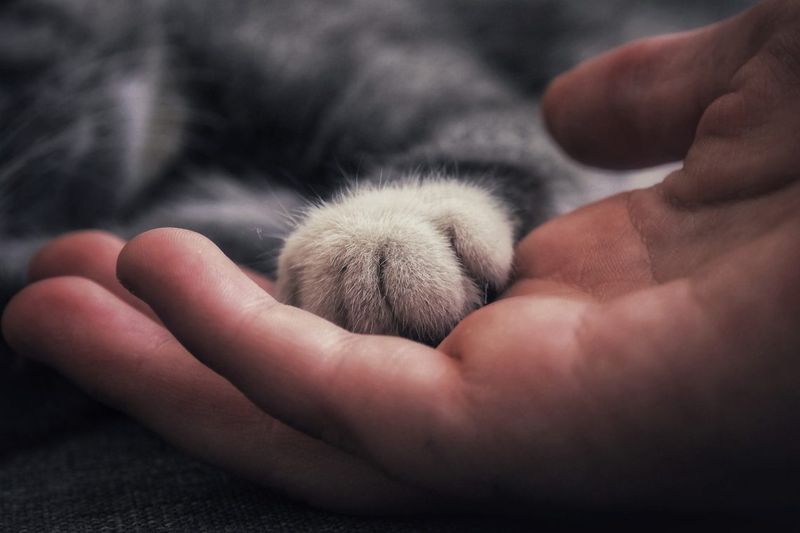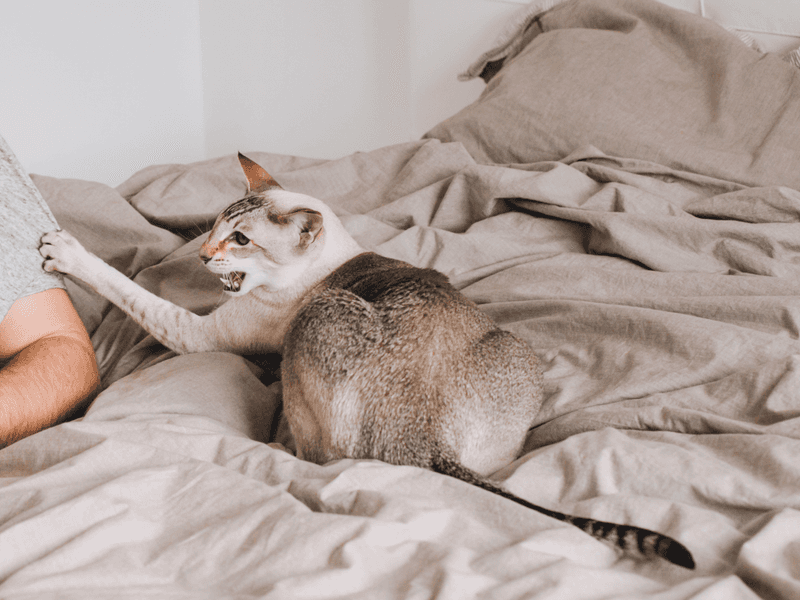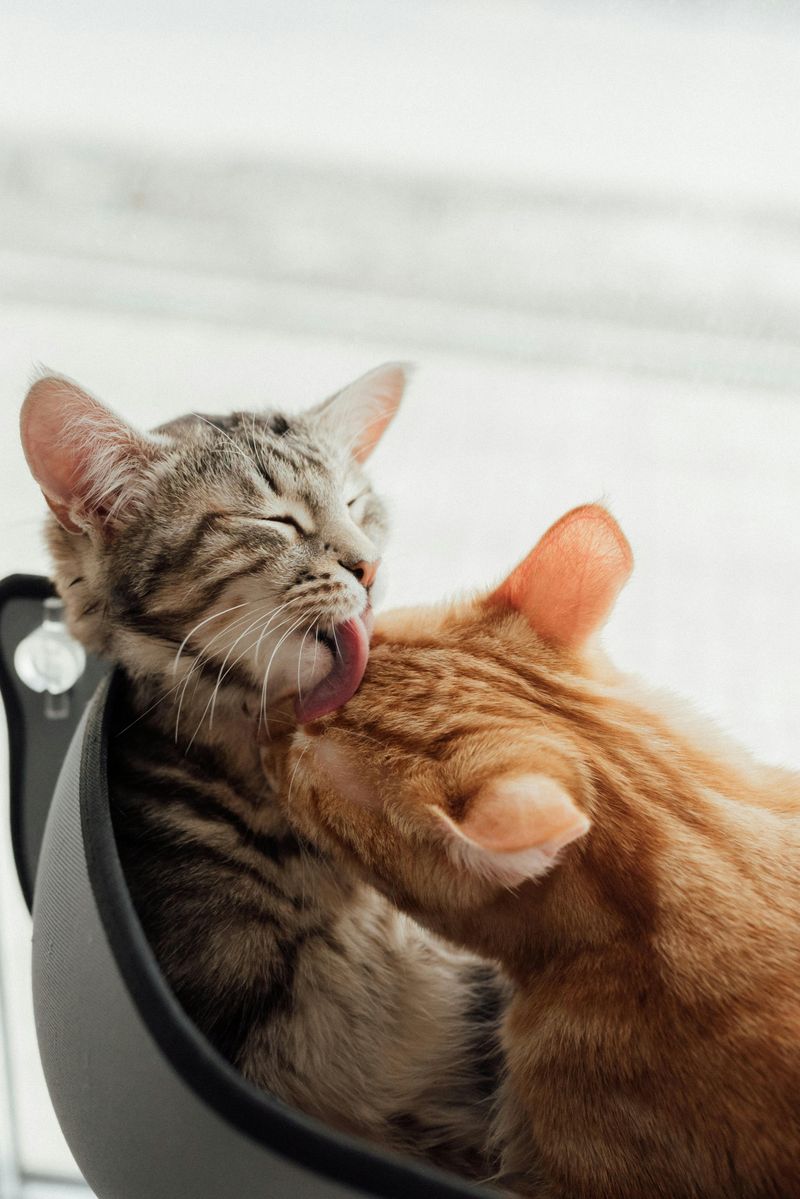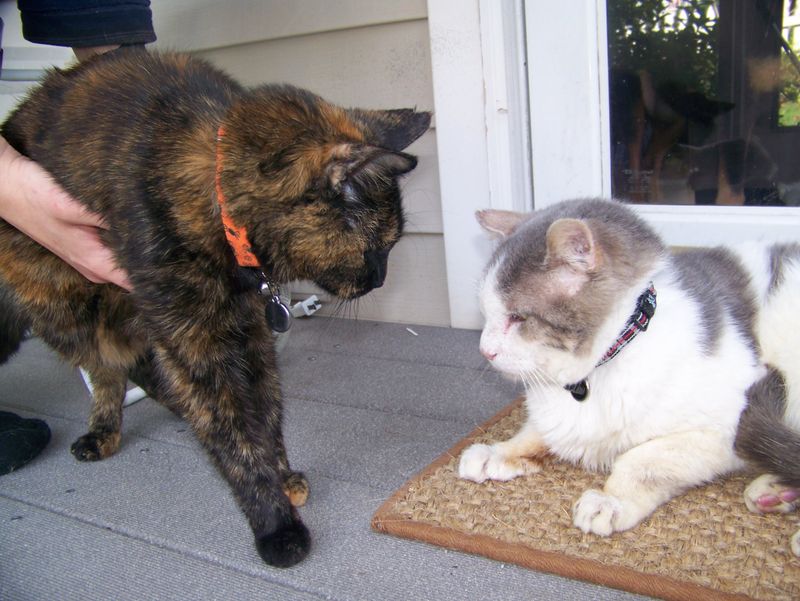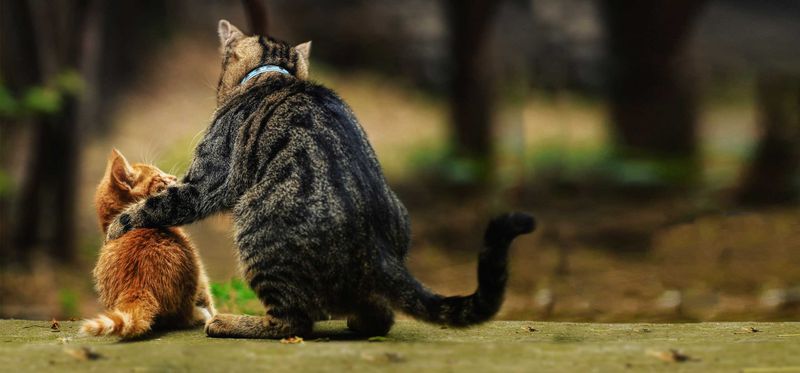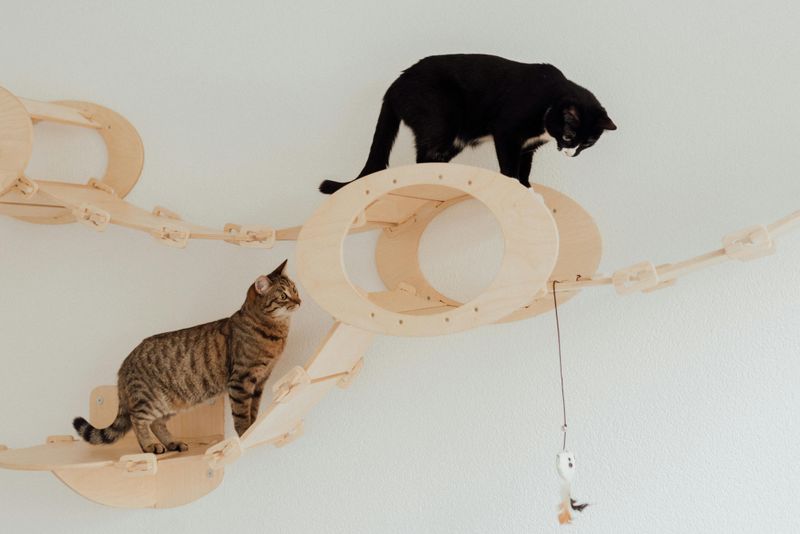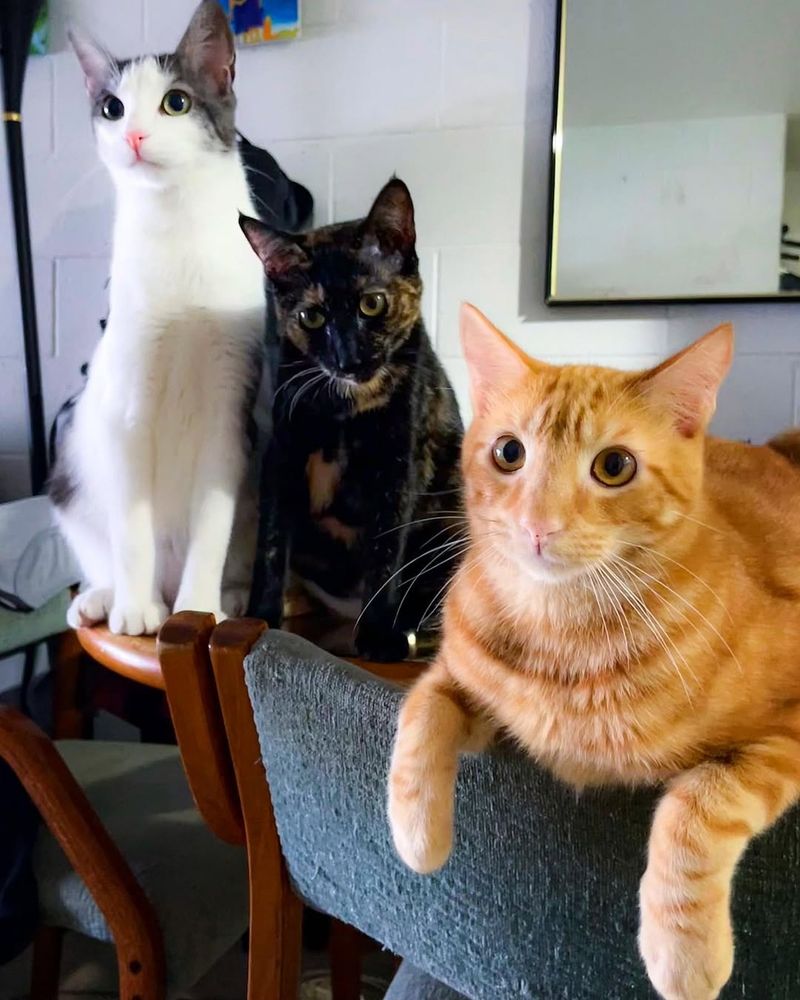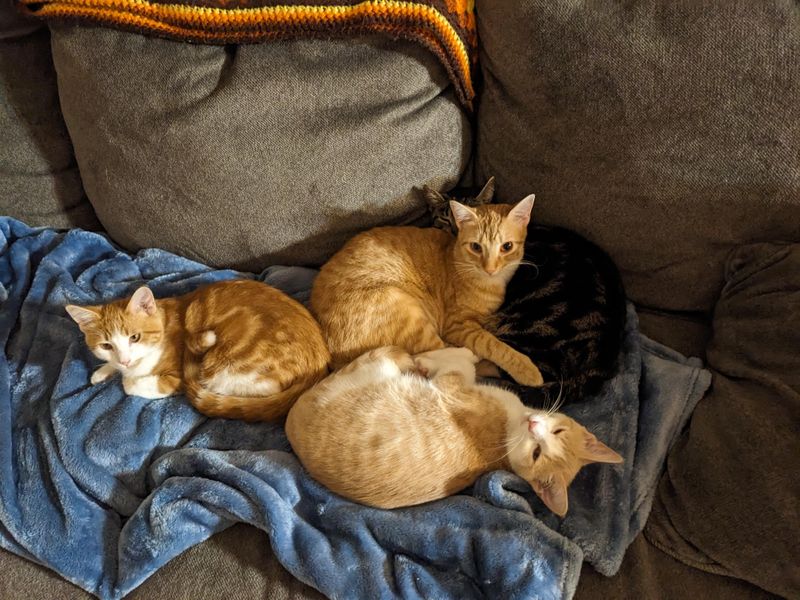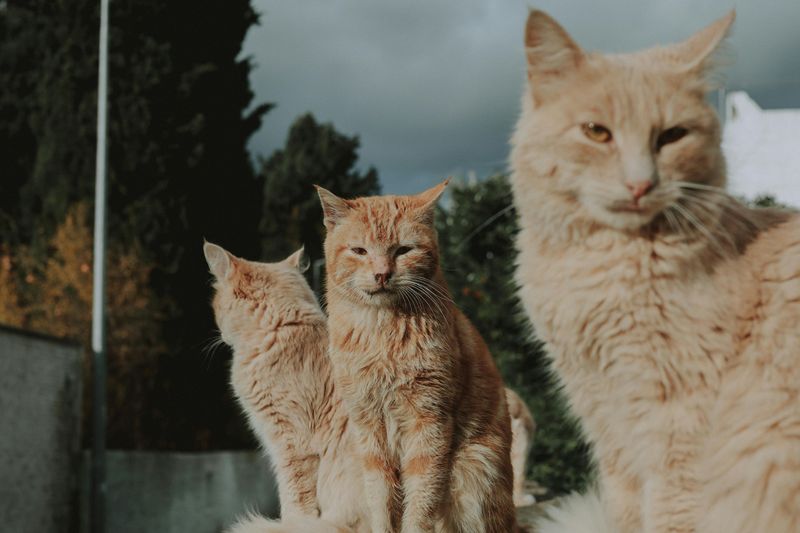📖 Table of Content:
- 1. Enhanced Socialization
- 2. Increased Physical Activity
- 3. Stress Relief
- 4. Mental Stimulation
- 5. Behavioral Enrichment
- 6. Natural Hierarchy Formation
- 7. Improved Communication
- 8. Reduced Aggression
- 9. Mutual Grooming Opportunities
- 10. Confidence Building
- 11. Learning Through Imitation
- 12. Enhanced Bonding
- 13. Better Adaptability
- 14. Emotional Fulfillment
- 15. Overall Well-Being
In multi-cat households, collaborative play is far more than mere entertainment—it is a vital tool for nurturing healthy social interactions and overall well-being. Group play fosters the development of social skills while promoting natural behaviors essential for both mental and physical health. Each playful encounter helps build bonds among the cats, contributing to a supportive and thriving environment. In essence, the energy and interaction generated during group play lay the foundation for a harmonious home.
The benefits of collaborative play extend well beyond physical exercise. Regular shared play sessions enhance communication as cats learn to interpret each other’s body language and establish a natural social hierarchy. This can lead to reduced stress and aggression, while simultaneously boosting confidence and fostering a sense of community. Moreover, the cognitive and emotional stimulation derived from group activities plays a key role in the cats’ overall development.
This article delves into fifteen distinct benefits of collaborative play among cats, each contributing to a balanced, enriched multi-cat environment. From improved physical fitness and enhanced social skills to increased emotional fulfillment, every advantage helps create a more joyful and dynamic home. By embracing these practices, pet owners can ensure that their cats coexist peacefully while enjoying a stimulating, nurturing lifestyle. Ultimately, group play emerges as a cornerstone of a thriving, harmonious household for feline companions.
1. Enhanced Socialization
Collaborative play fosters strong bonds among feline friends. When cats engage together, they learn essential social skills. These interactions help them develop positive relationships, reducing the likelihood of conflicts. Cats learn to coexist peacefully, which is crucial for households with multiple pets. Through play, they practice sharing resources like toys and space. This harmonious interaction leads to a more relaxed and enjoyable living environment. Encouraging this behavior promotes mutual respect and understanding among cats, making their home a happy and peaceful place. Ultimately, enhanced socialization contributes to the overall well-being and happiness of each cat.
2. Increased Physical Activity
Playing together stimulates cats to move, jump, and chase, significantly increasing their physical activity levels. This exercise is beneficial for maintaining a healthy weight and reducing the risk of obesity-related issues. Active play sessions contribute to muscle development and cardiovascular health. Cats that engage in regular physical activities are often more agile and fit. Moreover, playful interactions provide an excellent outlet for pent-up energy, which might otherwise manifest as destructive behavior. By encouraging group play, cat owners can ensure their pets remain physically healthy and more content. Overall, active play is vital for a cat’s physical well-being.
3. Stress Relief
Engaging in fun activities with their peers helps your cats release built-up tension and anxiety. This is particularly important in multi-cat households where competition for resources might cause stress. During play, cats can express themselves freely, which contributes to emotional balance. The playful interaction often results in laughter and joy, benefiting both the cats and their owners. Regular play sessions create a positive environment, reducing stress levels for all involved. Ultimately, playtime is a joyful escape that enhances the emotional well-being of cats, fostering a tranquil household.
4. Mental Stimulation
Group play challenges cats mentally, offering them the mental stimulation they crave. This engagement keeps their minds sharp and alert, preventing boredom and cognitive decline. Cats are naturally curious creatures, and interactive play satisfies this curiosity. Toys that require problem-solving or strategy enhance their mental abilities. Furthermore, mentally stimulating play encourages cats to be more observant and responsive. Through these playful interactions, they learn new skills and behaviors. Cat owners can facilitate this by introducing a variety of toys and games. In essence, mental stimulation through play is essential for a cat’s cognitive health.
5. Behavioral Enrichment
Sharing playtime offers behavioral enrichment, adding variety and excitement to a cat’s daily routine. This prevents boredom, which can lead to unwanted behaviors like scratching furniture or excessive meowing. Enrichment activities provide mental and physical challenges, keeping cats engaged and satisfied. By incorporating different types of toys and games, owners can cater to their cats’ individual preferences. This variety ensures that each cat remains interested and entertained. Moreover, enriched environments promote positive behaviors, contributing to a more harmonious household. Ultimately, behavioral enrichment through play is key to a fulfilling and balanced lifestyle for cats.
6. Natural Hierarchy Formation
In groups, cats establish and reinforce natural hierarchies. Through play, they communicate and negotiate their social standings, leading to a balanced and peaceful cohabitation. These interactions teach cats about boundaries and respect for one another. Hierarchy formation is crucial for minimizing conflicts and fostering harmonious living conditions. By observing the dynamics during play, cat owners can gain insights into their pets’ social structures. Understanding these relationships allows for better management of the multi-cat environment. Thus, natural hierarchy formation through play is vital for maintaining social order and harmony among cats.
7. Improved Communication
Cats enhance their communication skills, learning to interpret body language and vocal cues. These interactions teach them how to express needs and desires effectively. Improved communication reduces misunderstandings and potential conflicts. Cats become more aware of each other’s boundaries, leading to more harmonious interactions. Owners often notice that cats with good communication skills are more adaptable and cooperative. This understanding facilitates smoother cohabitation and stronger bonds between feline companions. By promoting group play, cat owners foster improved communication, contributing to a peaceful and connected home environment. Effective communication is key to a happy multi-cat home.
8. Reduced Aggression
Regular group play provides an outlet for pent-up energy, potentially decreasing aggressive behaviors. Engaging in playful activities allows cats to express their natural instincts in a controlled and positive manner. This reduces the likelihood of aggression towards other pets or household items. During play, cats learn to gauge their strength and adjust their actions accordingly. This self-regulation contributes to more peaceful interactions among companions. Additionally, the playful environment fosters trust and understanding, reducing territorial disputes. By encouraging regular group play, cat owners can create a more harmonious and less aggressive living space for their feline friends.
9. Mutual Grooming Opportunities
Social interactions during play often lead to mutual grooming, which is a significant bonding activity for cats. Grooming each other promotes hygiene and strengthens the trust between feline companions. It is an expression of friendship and affection, indicative of a strong bond. Cats that engage in mutual grooming are often more relaxed and content in each other’s presence. This behavior contributes to a peaceful and cooperative environment. Moreover, mutual grooming provides comfort and reassurance, enhancing emotional well-being. Encouraging such interactions ensures a harmonious and loving multi-cat home. Ultimately, mutual grooming is an essential part of collaborative cat play.
10. Confidence Building
New experiences can significantly boost a cat’s confidence. Engaging in successful play activities increases their self-esteem and social comfort. This confidence often translates into other areas of their lives, such as exploring new environments or interacting with strangers. Playful interactions teach cats to navigate challenges and adapt to different situations. As their confidence grows, cats become more adventurous and curious. Owners can support this development by providing diverse play opportunities. Confident cats are generally happier, healthier, and more adaptable. Therefore, confidence building through play is crucial for fostering a well-rounded and self-assured feline.
11. Learning Through Imitation
Cats often learn new behaviors and playful techniques by observing their peers. Imitation is a powerful learning tool in multi-cat households. Younger or less experienced cats benefit from watching their companions, picking up new skills and strategies. This observational learning leads to the development of diverse play styles and enhanced social skills. By imitating others, cats expand their repertoire of interactions, enriching their social experiences. Owners can facilitate this process by encouraging group play and providing varied activities. Learning through imitation not only strengthens bonds between cats but also promotes a dynamic and interactive living environment.
12. Enhanced Bonding
Shared playtime significantly strengthens the bonds between cats, fostering a sense of unity and companionship. Engaging in activities together creates positive associations and shared memories. These experiences build trust and affection, reinforcing the connection between feline friends. Cats that bond through play are often more cooperative and supportive of each other. This camaraderie contributes to a peaceful and harmonious household. Owners can nurture these bonds by promoting regular play sessions and providing interactive toys. Enhanced bonding through collaborative play leads to a more loving and cohesive multi-cat home. Ultimately, strong bonds are the foundation of a happy feline family.
13. Better Adaptability
Regular interactions through collaborative play help cats adapt more easily to changes within the household. Whether it’s introducing new pets or moving to a new home, adaptable cats handle transitions more smoothly. Playful experiences teach them to manage stress and embrace new situations positively. This adaptability is crucial for maintaining peace and stability in a multi-cat environment. By fostering cooperative play, owners can prepare their cats for potential changes and challenges. As a result, adaptable cats are more resilient and emotionally balanced, contributing to a harmonious living space. Better adaptability ensures a stable and content multi-cat household.
14. Emotional Fulfillment
Engaging in enjoyable activities with their peers fulfills their emotional needs, reducing feelings of loneliness or isolation. Cats that feel emotionally satisfied are less likely to exhibit stress-related behaviors. Playtime provides an opportunity for emotional expression and connection. Owners often notice that emotionally fulfilled cats are more affectionate and relaxed. By facilitating group play, pet owners can enhance their cats’ emotional well-being. Ultimately, emotional fulfillment through collaborative play leads to a happier and more harmonious multi-cat household.
15. Overall Well-Being
By combining physical, mental, and social benefits, group play contributes to a happier and healthier multi-cat environment. Cats that engage in regular collaborative play are often more vibrant and content. This holistic approach ensures that all aspects of a cat’s well-being are addressed. From reducing stress to enhancing social skills, the advantages of play are numerous. Owners who encourage group play witness healthier and more balanced cats. The joy and excitement of playtime create a positive atmosphere within the home. Overall well-being through play is essential for a thriving and joyful life for cats in multi-cat households.
